Mexican Embroidered Dresses
In the Yucatan, we often saw the women and girls dressed in beautiful Mexican embroidered dresses or huipiles as they are known there. These traditional Mexican dresses for women are usually white and colourfully embroidered with glorious flowers, vines and greenery on them and they are known as Huipiles or hipiles (pronounced wee-peel).
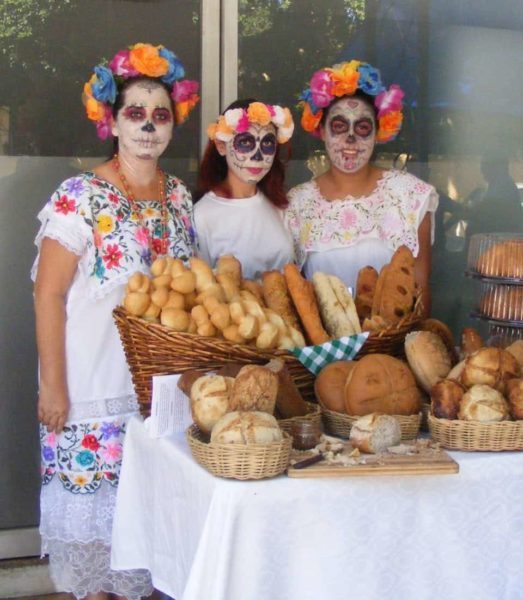
These intricately embroidered Mexican dresses for girls and women evolved from traditional Mayan garments that in the pre-Hispanic era were known as “kub”. The word Huipile has evolved from a Nahuatl word to denote a loose-fitting top or blouse made from two or three pieces of rectangular-shaped fabric which are joined together with ribbons, fabric inserts or simply stitched. There is an opening for the head and arms and they can be simply or elaborately decorated.
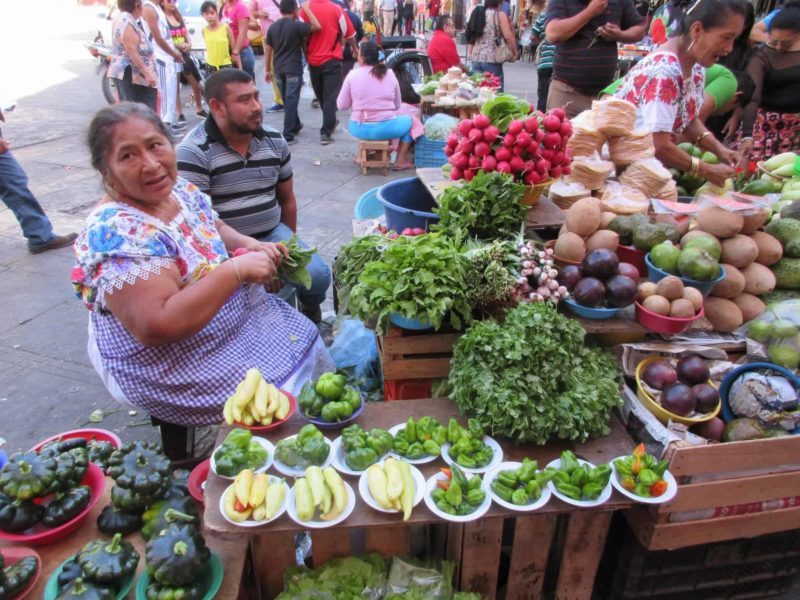
Mexican embroidered dresses
Traditional Mexican huipiles are usually made with fabric woven on a backstrap loom and are heavily decorated with designs woven into the fabric, embroidery, ribbons, lace and more. The length of the huipile will vary from a short waist-length garment to a tunic that reaches the floor.
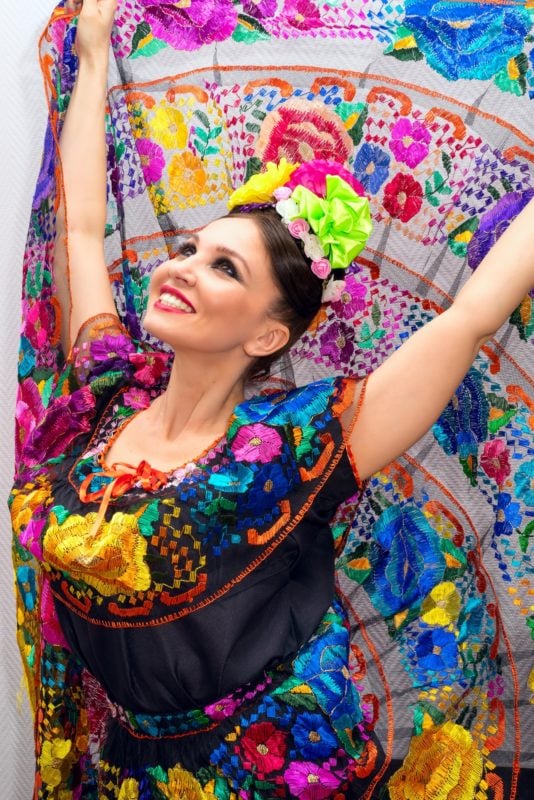
Mayan traditions – embroidering the huipile
According to historians, Mayans were embroidering with maguey thorns, or with thin feathers, as their needles. Yucatecan embroideries date from pre-Hispanic times, as proven by the discovery of pieces of embroidered garments at the bottom of Chichen-Itza’s sacred well. The traditional Mexican dress name here is the Yucatan is Huipile.
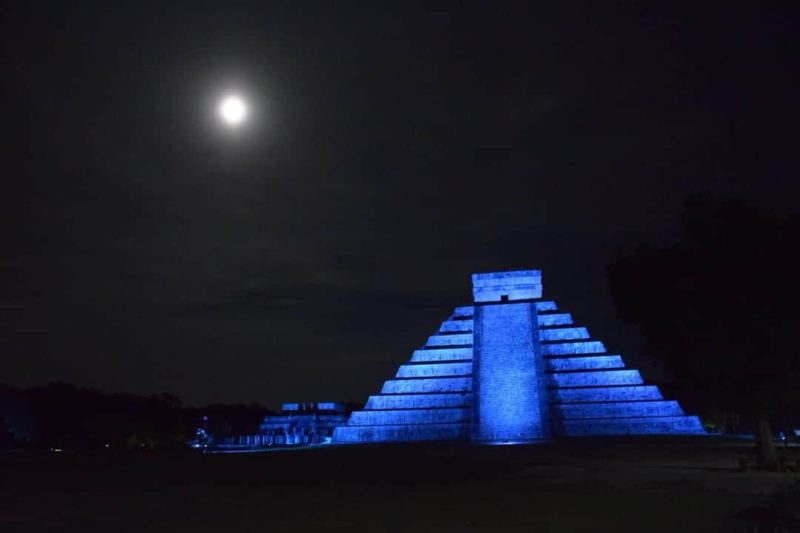
These embroideries were made using the “chuy cab” or satin-stitch technique. Several types of embroidery are used and the most beautiful and labour-intensive is the “xocbichuy” or cross-stitch, which is done by hand.
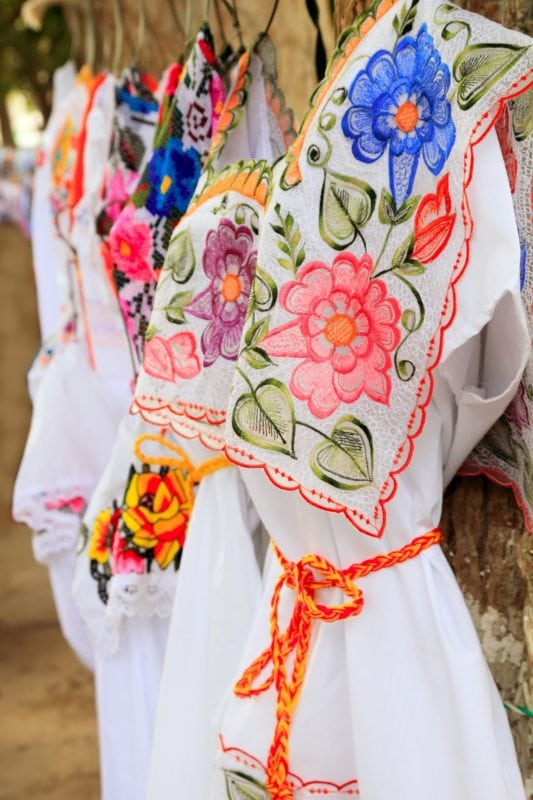
You may see white on-white embroidery which is similar to the Hardanger style in which the motifs are traditionally shaped such as squares, triangles, circles and so on, the threads can also be pulled together to leave open work areas.
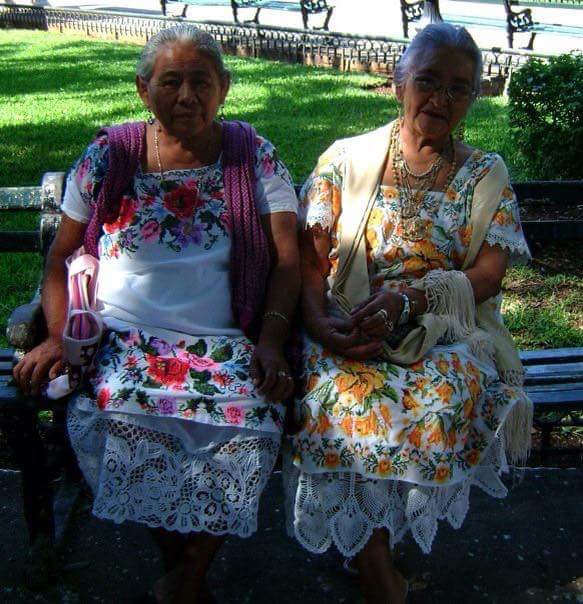
Spanish Conquest and the Mexican embroidered dresses
The Spanish Conquest brought metal needles to the Yucatan and the nuns that came along with the conquest established schools and taught European-style embroidery techniques such as the cross-stitch called “xocbichuy” which means “to count” in Mayan.
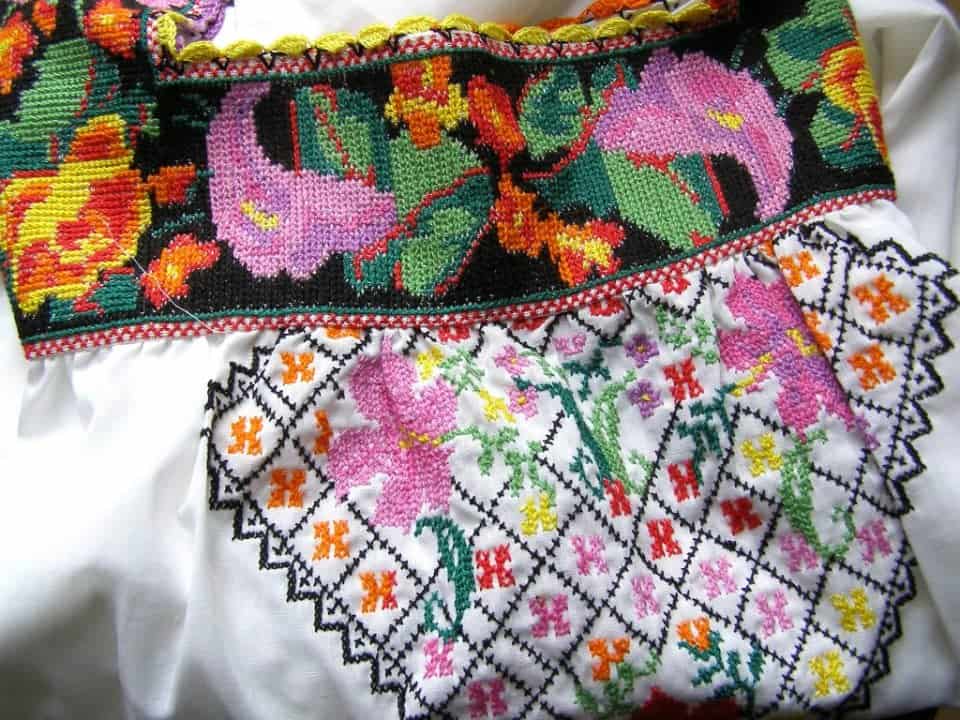
Contemporary designs have four basic forms: diamonds, which symbolize the earth and sky as a unity; undulating forms, like snakes, which symbolize the fertile earth; forms with three vertical lines, which symbolize the foundation of the world, the community, and its history; and representational figures, such as toads (the musicians of the rain) and patron saints.
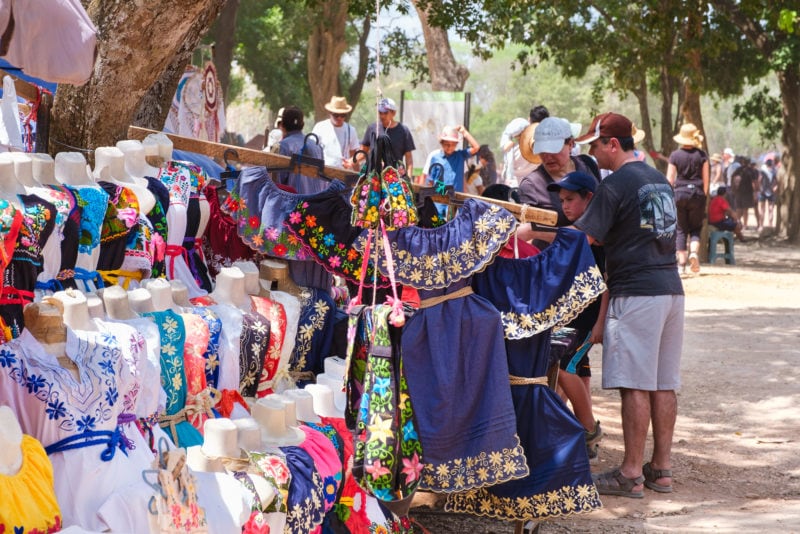
The special occasion dress is called the terno, which means it has three pieces: the jubon is the first piece and it is a flat square piece that is very richly embroidered and trimmed with lace, it is attached to the neck of the second piece which is the actual huipile.
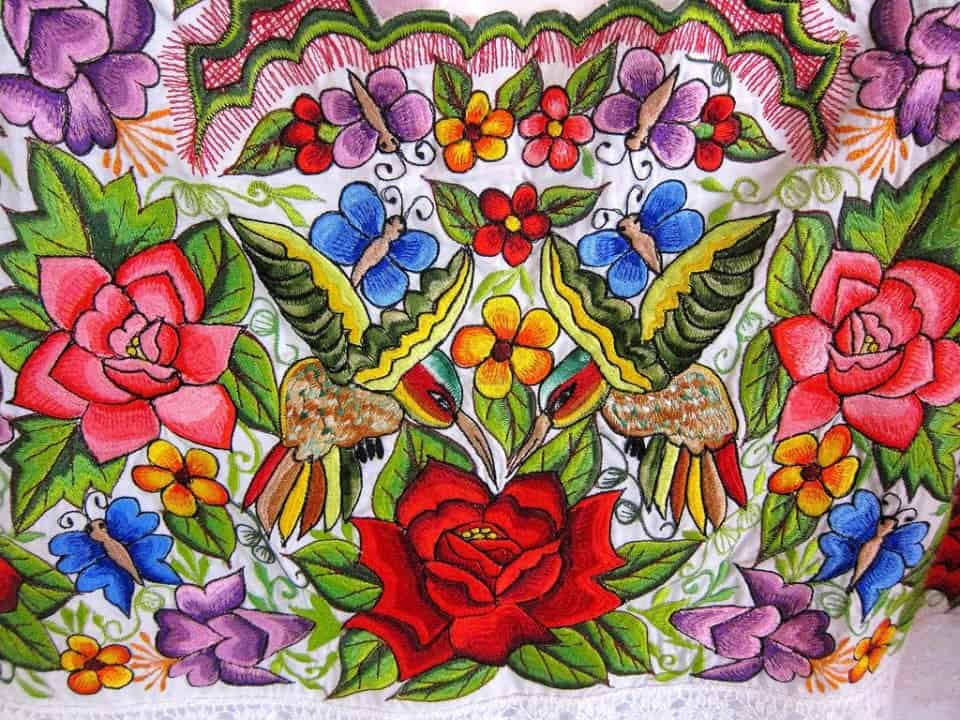
The huipile is a knee-length square dress richly embroidered and has a deep lace hem. The third piece is the fustan which is a long, slip worn under the hipil also embroidered and lace-trimmed. The dress is accessorized with white or embroidered shoes, filigree necklaces of gold and coral, a headdress of ribbons and flowers, and a “rebozo de Santa Maria” or shawl which matches the embroideries.
A Mexican embroidered dress is a beautiful gift to bring home to someone. These dresses are found all over Mexico and each region has their own style of embroidery and various dress designs.
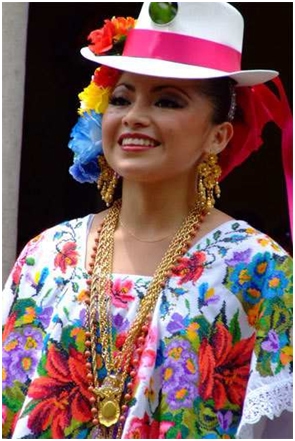
Mexican dresses for women of all sizes and lengths and levels of detail are available for purchase all over the Yucatan. A simple backstrap woven huipile will cost in the range of $30, whereas a very simple machine embroidered one will be around $15. A beautiful hand-embroidered full Terno could cost in the range of $1000 or more depending on the level of quality.
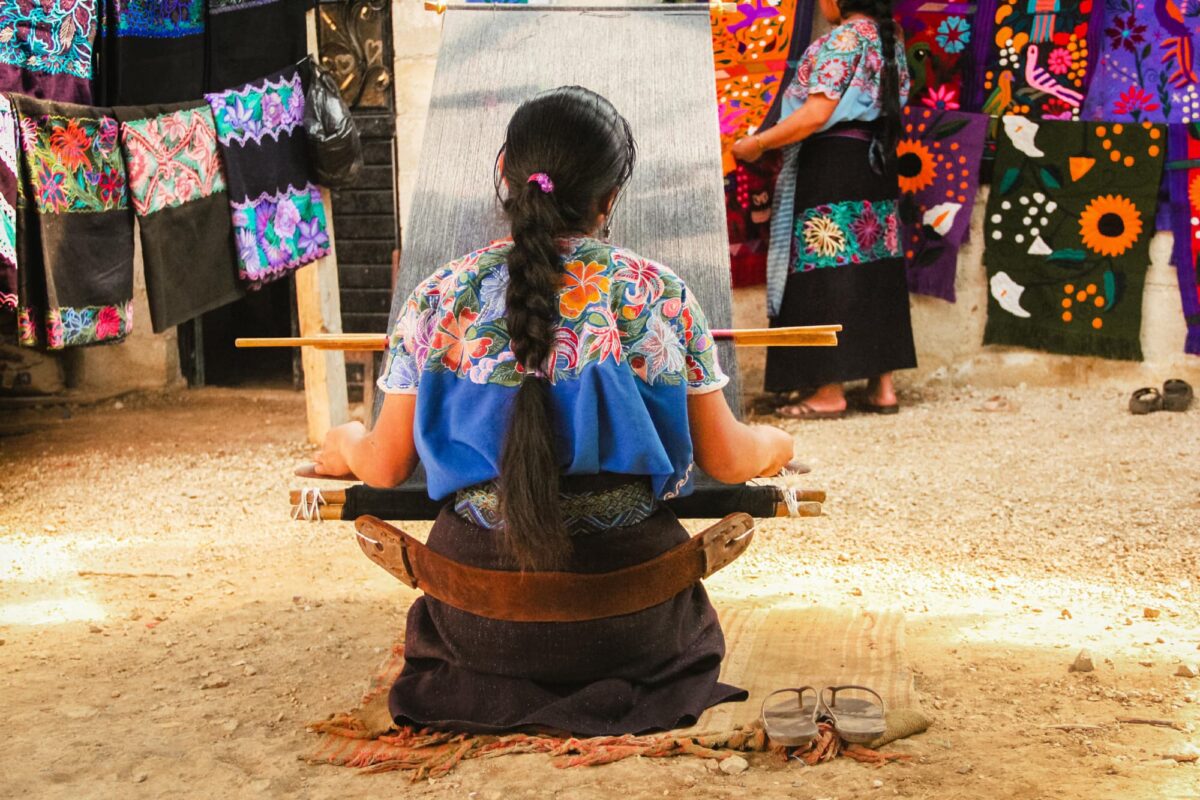
As for keeping your Huipiles white here is a tip passed on from some Facebook friends
“They soak their white clothes in water with polegia and soak for 1 hour then with white soap Jabon Zote they wash them in a washtub. You never use bleach or put them in the washing machine.”
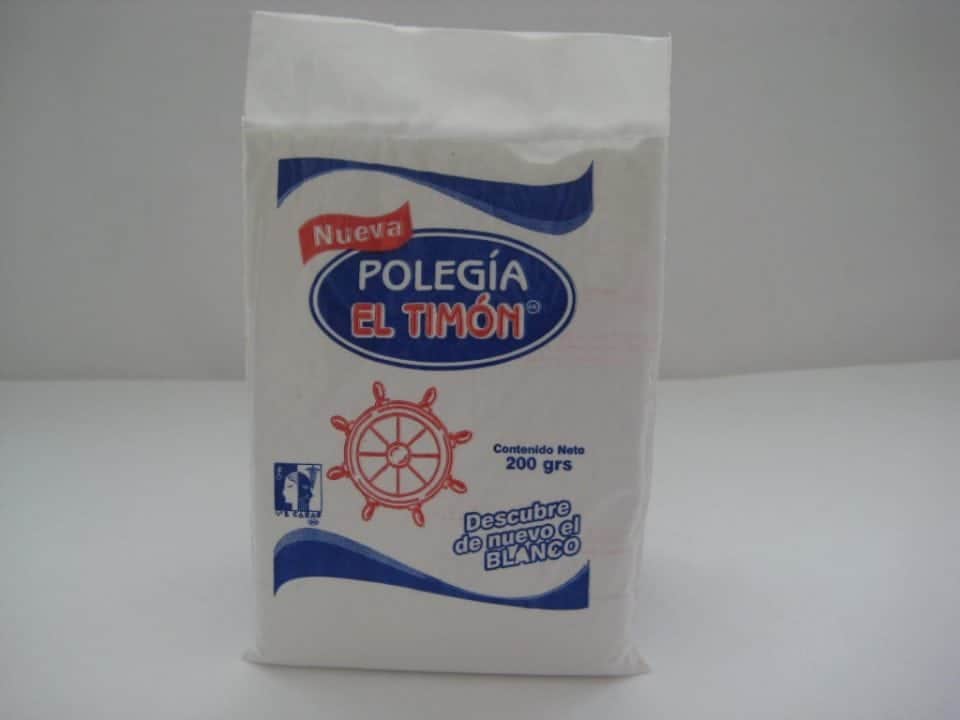
Polegia is a laundry whitener that contains bicarbonato de sodio, cloruro de sodio and sulfato de sodio to add to boost your detergent’s cleaning power, and Jabon Zote is a pure soap made from the following: Zote oil and tallow and coconut oil scented with citronella. Other ingredients include sodium chloride, glycerin, perfume, optical brightening and dying. Jabon Zote is also reputed to be a great mosquito repellent, fishing bait and much more apparently.

These are some of the shops in Merida that you can find huipiles to purchase.
Lucas Galvez Market – main centre Merida
Casa de las Artesanías
Calle 63 between 64 and 66 Centro
Want to learn more about the Yucatan area of Mexico and possibly living there check out these links
Living the ex-pat life in Chuburna on the Emerald Coast
Visiting Merida the White City
What’s it like to live in Chelem? Retiring to Mexico & living in the Yucatan
Merida tours the best day trips from Merida Mexico
14 Must Do’s in Merida | Things to do in Merida the safest city in Mexico
Dzibilchaltun a Cenote and Mayan Site in Merida Mexico
The Phenomenal Mayan Ruins of Uxmal
Mysterious Aluxes the little people of Mexico Mayan Legends
The secret Templo de los Falos at Uxmal Mexico
Beautiful Campeche Mexico a cotton candy coloured town
Interested in more pin it for later

